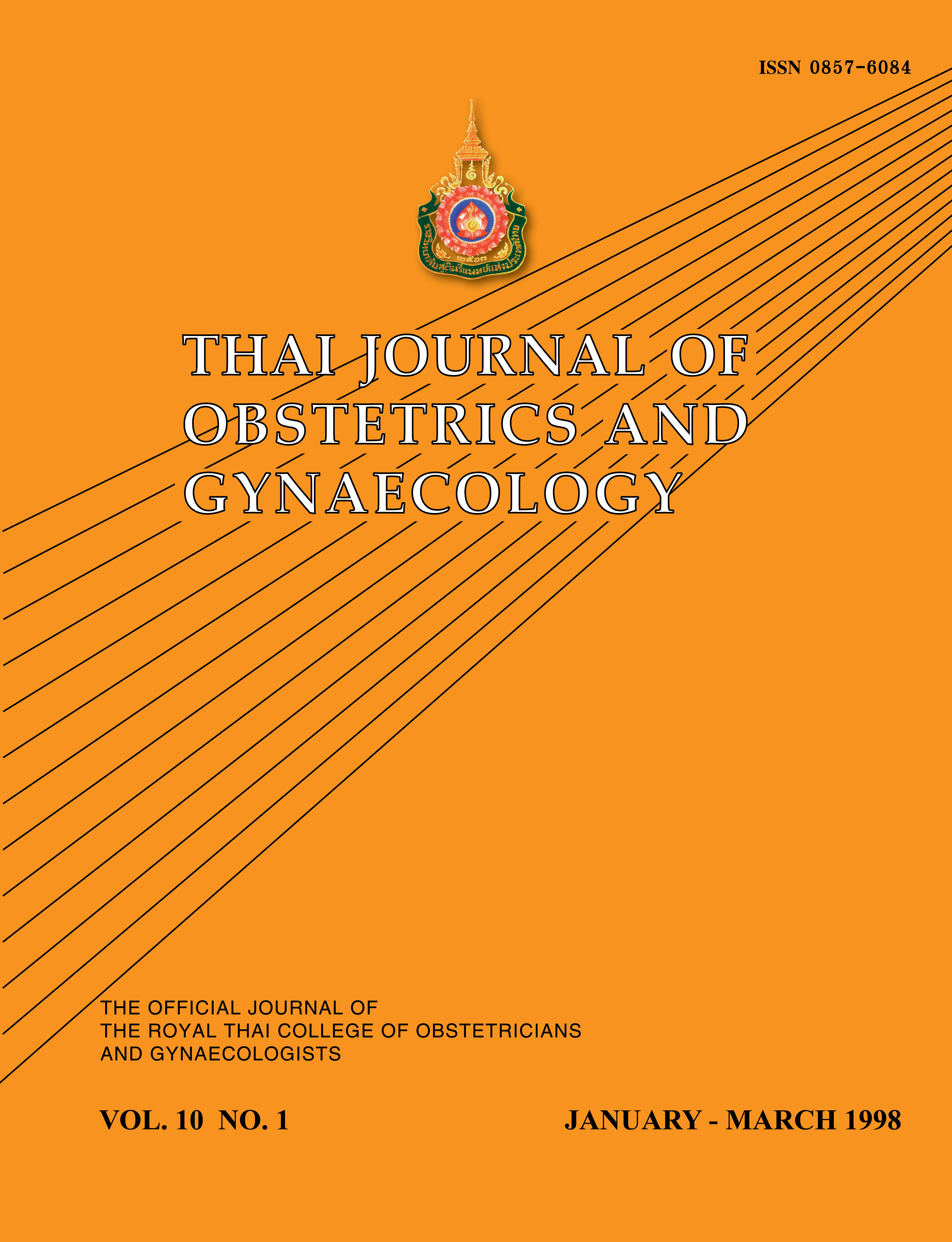Management and Result of Patients with Positive Cone Margin at Rajavithi Hospital
Main Article Content
Abstract
Objective To evaluate the results of the management of patients with positive cone margin after cervical conization.
Subjects 136 patients with positive cone margin after cervical conization
Results From 1985-1995, a total of 601 patients had cervical conization by cold knife conization and large loop excision of the transformation zone. Out of these patients, 465 (77.37%) had negative margin, and the remaining 136 patients (22.62%) had positive margin. In the latter group, 92 patients underwent simple hysterectomy, 18 patients had radical hysterectomy with or without lymphadenectomy, 9 patients followed up with Papanicolaou smear, and 4 patients had radiation therapy. Of the remainder, 12 did not come for continued treatment and one was beyond further treatment. Of the 92 patients who underwent simple hysterectomy, 82.61% were found to have residual disease in the hysterectomy specimen. The histology showed that 53.26% of residual disease in the hysterectomy specimens were the same as conization, 6.52% were higher grade and 40.22% were lower grade. The hysterec tomy specimens of those patients in cervical intraepithelial neoplasia grade III from conization revealed that 2.17% had microinvasive carcinoma and a further 2.17% had invasive carcinoma. In the group of patients who underwent radical hysterectomy, 16 patients or 88.89% were found to have residual disease. Of which 66.67% showed the same histologic finding as conization, 5.56% were higher grade and 27.78% were lower grade. Three patients in the simple hysterectomy group and one patient in the radical hysterectomy group had repeated conization. 75% of these repeated conization still had residual disease. In the group of 9 patients who had continued treatment by Pap smear, 11.11% were found to be positive. Four patients had radiation therapy because 3 patients with microinvasive were obese that the operation cannot be performed and another one had positive nodes. All the patients except 12 cases who lost follow up still follow until January 1998.
Conclusion One hundred and thirty six patients with positive cone margins were diagnosed and treated during 1985-1995 and were followed until 1998. Only 9% were lost followed up. The remainder 124 patients, 92 patients underwent simple hysterectomy, 18 patients had radical hysterectomy with or without lymphadenec tomy, 9 patients were followed with Pap smear and 4 patients had radiation. 82.61% and 88.89% were found to have residual disease in the first and second group. In the follow up group with Pap smear, 11.11% had positive result. For the patients who had repeated conization, 75% of the cases still had residual disease. The patients who had positive cone margin should be followed up regularly. Also the patients who had completed families should be investigated to rule out invasive carcinoma in residual disease before hysterectomy due to high percentage of residual disease in the incomplete conization.
Article Details

This work is licensed under a Creative Commons Attribution-NonCommercial-NoDerivatives 4.0 International License.


